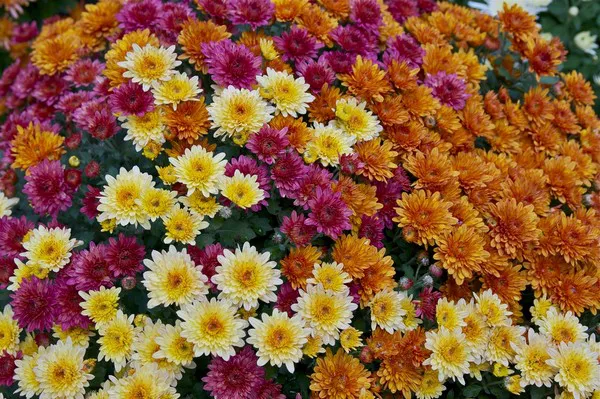Flowers have the power to bring joy, beauty, and a touch of nature into our lives. Whether they’re from your garden, a special occasion, or a thoughtful gift, preserving flowers allows you to enjoy their charm for an extended period.
Choosing the Right Flowers
The process of preserving flowers begins with selecting the right ones. Not all flowers are suitable for preservation, as some varieties tend to wither and lose color more quickly than others. Opt for flowers that are known for their longevity, such as roses, lilies, chrysanthemums, and carnations. Additionally, choose flowers that are in their prime and free from blemishes or damage for the best results.
Drying Flowers
One of the most popular methods for preserving flowers is drying. There are several techniques you can use, including air drying, pressing, and using desiccants. Air drying involves hanging the flowers upside down in a well-ventilated area, while pressing involves placing flowers between absorbent materials like blotting paper and heavy books. Desiccants, such as silica gel, can also be used to absorb moisture from the flowers and preserve their shape and color.
Pressing Flowers
Pressing flowers is a delicate and traditional method of preserving their beauty. To press flowers, arrange them between sheets of parchment paper or blotting paper, ensuring they are not touching. Place the sheets in a heavy book or flower press and leave them to press for several weeks. This method works best for thin, delicate flowers like pansies and daisies.
Using Silica Gel
Silica gel is a versatile desiccant that effectively preserves the shape and color of flowers. Start by filling a container with silica gel. Trim the flower stems and bury them in the gel, making sure the blooms are completely covered. Seal the container and leave it undisturbed for about a week. Once the flowers are dry, carefully remove them from the gel and brush off any excess.
Air Drying Flowers
Air drying is a simple and cost-effective method for preserving flowers. To air dry flowers, bundle them together with twine or rubber bands and hang them upside down in a dry, dark, and well-ventilated area. The process can take several weeks, depending on the thickness of the flowers and humidity levels. Once dried, the flowers can be sprayed with a floral sealant to enhance their longevity.
Microwave Drying
For a quicker method of preserving flowers, consider using a microwave. Place the flowers between sheets of paper towels, leaving space between each bloom. Microwave them on low heat for short intervals, checking their progress regularly. This method can dry flowers in a matter of minutes but may result in slightly altered colors.
Using Glycerin
Preserving flowers with glycerin is a unique method that maintains both their shape and flexibility. To do this, create a solution of one part glycerin to two parts warm water. Trim the flower stems and immerse them in the glycerin solution, ensuring the stems are submerged. Leave them in the solution for several days until the flowers have absorbed the glycerin. This method is especially effective for roses and carnations.
Freezing Flowers
Freezing is another technique for preserving flowers, especially those with delicate blooms like orchids and lilacs. To freeze flowers, arrange them in an airtight container or freeze them individually in ice cubes. This method can help maintain the flowers’ vibrant colors, but keep in mind that the texture may change upon thawing.
Preserving Flowers with Wax
Wax preservation is a unique method that gives flowers a beautiful translucent appearance. To do this, melt paraffin wax in a double boiler and dip the flowers into the wax one by one, ensuring they are fully coated. Hang them upside down to cool and harden. Wax-preserved flowers can be displayed in various decorative arrangements.
Sealing with Floral Sealant
Once you have successfully preserved your flowers using any of the above methods, it’s a good idea to protect them further with a floral sealant. Floral sealants are available in spray form and help lock in moisture, maintain color, and prevent decay. Apply the sealant in a well-ventilated area, allowing the flowers to dry completely before arranging them.
Display and Care
After preserving your flowers, you’ll want to display and care for them properly to ensure their longevity. Keep them away from direct sunlight, as prolonged exposure can cause the colors to fade. Also, avoid placing them near heating or cooling vents, as extreme temperature changes can affect the flowers. Dust them gently with a soft brush or a can of compressed air to keep them looking fresh.
Experiment with Arrangements
Preserved flowers are versatile and can be used in various decorative arrangements. Create floral wreaths, shadow boxes, or framed botanical art to display your preserved blooms. Experiment with different designs and arrangements to showcase the beauty of your preserved flowers in unique and creative ways.
Conclusion
Preserving flowers allows us to capture the fleeting beauty of nature and cherish it for years to come. Whether you choose to dry, press, freeze, or use other preservation methods, the key to success lies in choosing the right flowers and following the appropriate techniques. With care and attention to detail, you can enjoy the enchanting beauty of preserved flowers as a timeless reminder of the natural world’s elegance and grace.


